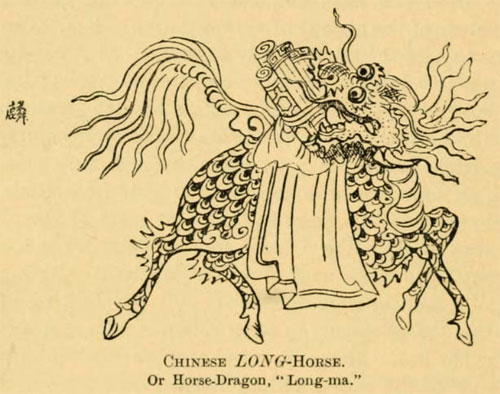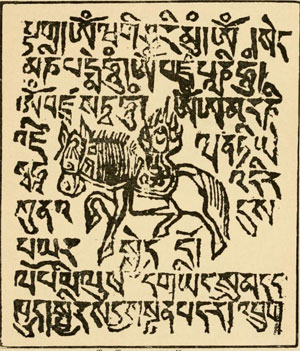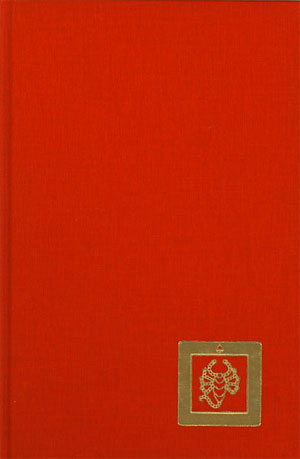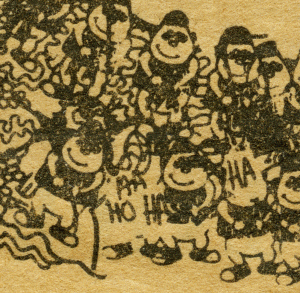by Lama Willa B. Miller
May 19, 2018
NOTICE: THIS WORK MAY BE PROTECTED BY COPYRIGHT
YOU ARE REQUIRED TO READ THE COPYRIGHT NOTICE AT THIS LINK BEFORE YOU READ THE FOLLOWING WORK, THAT IS AVAILABLE SOLELY FOR PRIVATE STUDY, SCHOLARSHIP OR RESEARCH PURSUANT TO 17 U.S.C. SECTION 107 AND 108. IN THE EVENT THAT THE LIBRARY DETERMINES THAT UNLAWFUL COPYING OF THIS WORK HAS OCCURRED, THE LIBRARY HAS THE RIGHT TO BLOCK THE I.P. ADDRESS AT WHICH THE UNLAWFUL COPYING APPEARED TO HAVE OCCURRED. THANK YOU FOR RESPECTING THE RIGHTS OF COPYRIGHT OWNERS.
In the Summer 2018 issue of Buddhadharma: The Practitioner’s Quarterly, Lama Willa Miller offers both her painful firsthand account of sexual misconduct by a guru and insight for fellow survivors and communities. Photo-performances by Cecilia Paredes.
Victim. Survivor. Consort. Partner. One of “those women.” I stare at these identities on the page, and one by one I try them on. The words feel like button-down shirts that are too small. Yet sometimes they seem to fit, depending on the shifting fragments of memory that make up that time in my life.
A young woman called me on the phone in October of 2016. We shared the same dharma teacher. We also shared a history, without our knowledge. When she first called, she said it was about graduate school—she was thinking of going and wanted to know what my experience was like. Did I remember her, she asked? In the past, she said, people at the monastery have compared us. Like you, I was completely devoted to the teacher, she said.
All in. Yes, I know what it is like to be all in. An image of a young woman in maroon robes at the monastery surfaces; I met her once, in passing, in the interview room upstairs.
We were on the phone for just five minutes before she broke down in tears. She did not tell me why she was crying, not in that first conversation. We talked around it. But I knew why she was crying. I knew why she was speaking in shadow language.
A few days later, I sit in front of my laptop, trying to come up with words to describe the experience of my twenties. I am writing them, as best I can, to communicate what it was like to have one’s heart held hostage—what it was like to be a dharma teacher’s secret sexual partner.
I was 22 years old, and my dharma teacher was the center of my world. I had given up everything.
The memories are dammed up in my body: the smell of sewage and cumin in the hot Indian air, the texture of newly ironed cotton on my skin, the whirr of sleepy ceiling fans above, the feeling of being unable to wake from a bad dream. These sense experiences are as accessible to me now as they were that day.
That day was in late January 1988. I was 22 years old, and my dharma teacher was the center of my world. I had given up everything—my old friends, my job prospects, my family, my possessions—“for the sake of the dharma.” I had thrown caution to the wind in order to follow this teacher’s vision for my life. All in.
That was the day he first approached me. We were alone in a hotel room in Delhi, for a dharma check-in he had arranged. The check-in lasted just minutes, though, before he grabbed my body and pressed his face toward mine.
My body was wrapped in burgundy robes, my head freshly shaved. It was sandaled and draped with a mala, a gao (Tibetan prayer amulet), blessing strings. That body had not been touched by a man for some time. I had been encouraged for many months to be celibate, a lifestyle culminating in monastic ordination. Just sixteen days before, at the insistence of this very same teacher, I had taken vows of celibacy for life.
When I was 22, I had no idea how to make sense of all of this. There was no modern literature, at least none I had seen, on teacher-student sexual relationships in Buddhism. Shoes Outside the Door, Sex and the Spiritual Teacher, and Eyes Wide Open weren’t yet written. Medieval narratives of Buddhist life in awkward translation were my sole reference point. In these tales, women were consorts, dakinis, muses—desirable reflections of the male gaze.
Words that Bind, Words that Liberate
Clergy sexual misconduct. Abuse of power. Exploitation. We don’t want to believe these words apply to us or our sanghas. We turn away from them for understandable reasons. We may be afraid of the shame they would bring to our Buddhist communities. We might worry they will threaten our practice or the values we hold dear. We may be afraid to look at the truth that the very teacher we believed to be the embodiment of perfection is, in fact, a complicated human being. Inquiring into these words means questioning everything, including some of our deepest beliefs. The courage and emotional energy required to do this is significant.
As “one of those women,” when I was in my twenties, I probably would not have connected these terms to my life even if I had come across them. While I knew by year three of the relationship that what was happening to me was painful and disempowering, I believed I alone was at fault. Even when I did finally come across these terms, long after the relationship had ended, they at first seemed foreign to me.
Yet as I inquired into the meaning of these words, they gave me a fresh frame within which to consider and explore my history. Could it be that what had happened to me had also happened to other people, both within my tradition and outside of it? Was it possible that I alone was not at fault—that my teacher’s actions were also responsible for the suffering we both endured? Was it possible that there are some boundaries that simply should not be crossed?
Boundaries and Power in Spiritual Communities
Over the years, women practitioners have shared with me stories of teacher sexual misconduct. It is more common than you might imagine:
“He came into my room during retreat unannounced. He asked me to undress. He also undressed. He sat on my zabuton and asked me to get in his lap.”
“I had a dharma interview with him. During the interview, he took my hand while I was talking about my aunt’s cancer. I was crying. I thought he was going to comfort me, but he took my face in his hands and kissed me.”
It was after the teaching. People were hanging around drinking tea. He came up to me and whispered in my ear, “You look delicious.”
“He said that if I performed better in bed, it would not last as long. I started to cry and tried to get up. He pushed me down on the bed and tried to insert his limp penis inside me.”
These are words of women in the Vipassana, Zen, and Tibetan traditions. Sexual misconduct is found in all schools of Buddhism, and it comes in many varieties. It can be verbal, such as an inappropriate comment or a proposition. Or it can be physical: kissing, fondling, and touching, all the way up to sexual intercourse. The offending teacher might frame the sex as casual or as spiritual. Secrecy is usually involved, and when it is, the harm is ultimately more egregious.
In a recent study by Baylor University, clergy sexual misconduct was defined as sexual advances or propositions made by religious leaders to a person in the congregations they serve who is not their spouse or significant other. This describes a type of conduct that has been demonstrated in research studies to expose individuals and communities to a significant risk of trauma and harm. As a result, a growing number of states (nine to date) have made clergy sexual misconduct a punishable offense.
This kind of sexual misconduct is different from other types. What makes something clergy sexual misconduct is not the specifics of the sexuality but rather that sexual activity of any kind is happening between two people who have—by virtue of their respective roles—entered into an implicit agreement. The student has implicitly agreed to trust the teacher with the course and health of their spiritual life. The teacher has implicitly agreed to refrain from exploiting their position of power and to respect the student’s trust and honor their vulnerability.
This agreement establishes a safety zone in the relationship. The safety zone is a liminal space in which a student can safely be vulnerable and open, and in which a teacher bears witness, embodies compassion, and imparts guidance. Trust in the safety zone is essential to deep spiritual work. The erosion of physical boundaries is one of several ways this safe space can be violated.
To understand why violating a safety zone is problematic, we have to understand something about power. Like psychotherapists, high school teachers, and professors, clergy (this includes dharma teachers, lamas, roshis, ajahns, spiritual friends, etc.) hold sway over their students simply by virtue of their rank and position in the community. They are powerful, but that power is often invisible; you can’t hold it in your hand or show someone its dimensions with a measuring tape. Nevertheless, it’s a highly influential force in our lives and the signs of it are there, if you know how to look for them. You can determine a person’s status, for example, by where they are seated in a room.
Survivors of clergy sexual misconduct start out with a deep sense of trust in their abuser that decays into feelings of confusion and betrayal.
Conventional professional ethics posit that the person who holds the greater power in a relationship holds more responsibility for maintaining the integrity of the boundary. This means that Buddhist teachers are the ones primarily responsible for maintaining clear boundaries with their students.
If the boundary erodes and the safety zone is compromised, the spiritual health and well-being of both parties is jeopardized. But the less powerful individual in the relationship is much more vulnerable, psychologically and spiritually. Like incest survivors, survivors of clergy sexual misconduct start out with a deep sense of trust in their abuser that decays into feelings of confusion and betrayal. And survivors of clergy misconduct face many of the same risks: depression, anxiety, suicidal ideation, feelings of guilt and shame, and difficulty establishing trust in future relationships. These symptoms can descend gradually or suddenly and may go on for years.
Victims, Survivors, Thrivers
Soon after being approached by this young woman, I reached out to three other women in my community whom I either suspected or knew had been in a sexual relationship with my teacher. Eventually, we all came forward together in a formal public disclosure process facilitated by a professional mediator. The monastery hired the mediator to help them address the revelations with which they were confronted. In preparing for the disclosure, it gradually became clear that in order to protect the anonymity of the women who did not wish to be named, a category was needed to refer to them.
What are we? I wondered, scrolling through the literature on sexual misconduct. Victims? The word conjured up bruised upper arms, restraining orders, and children. Survivors? Destiny’s Child lyrics lapped at the edges of my consciousness. Eventually, I happened on a schema describing stages of recovery from sexual assault that sounded hauntingly familiar. The stages were called victim, survivor, and thriver.
The phase of victim comes early in the recovery process. Initially, many victims are unaware they are caught in an abusive relationship. Lack of awareness may go on for a long time, accompanied by growing feelings of aversion, extreme anxiety, and self-recrimination. In the victim phase, these feelings gradually take hold of the body and mind, resulting in a sense of powerlessness, loss of agency, invisibility, and shame. If the relationship collapses, the victim feels a paralyzing sense of loss and grief but may be reticent to talk about what has happened.
The survivor phase comes midway through the recovery process. In this phase, the person begins to recognize the complexity of what happened and the possibility that the teacher bears some responsibility. In time, there is a return of a sense of autonomy and agency. In this phase, the survivor begins to want to process their experience verbally and may seek support from a therapist or close friends. The individual may feel anger at the perpetrator for the first time and may also harbor profound regrets.
The third, or thriver, phase comes toward the end of the recovery process. In this phase, the person is able to look back on their history without intense emotional activation. It becomes possible to move beyond grief and regret to a sense of appreciation for the difficult experience as a formative process. In the phase of thriver, the person has essentially healed and moved on. While survivors may not feel strong enough to help others through a process of recovery, thrivers are often motivated to do so.
The web I was caught in was a subtle form of violence that was bigger than me.
In reality, these phases are not strictly sequential but rather mirror a human fluctuation between victimization and resilience. We might move into the phase of thriver and then backslide into the phase of victim.
We finally settled on referring to ourselves as survivors. The term kept all of us squarely in the middle of the recovery process, a place that seemed to be sufficiently empowering.
As the date of the formal disclosure meeting approached, I witnessed the reactions to this language of professional ethics in that sangha. Some felt the dyad of survivor and perpetrator was impersonal, dehumanizing, or polarizing. Some were concerned that it might perpetuate a disempowering narrative for the victims. Language has its limitations, and it can feel reductive.
But the language of professional ethics also has the power to liberate by making the invisible visible. In my own case, I had a hard time being objective about my situation for many years. It was entirely too personal. I had woven a narrative about my culpability and why I could not extract myself from an ultimately disempowering situation, a story fed by isolation, fear of losing connection, my self-beliefs, and even by Buddhist doctrine.
When I encountered this fresh terminology, it allowed me to step back and see myself as part of a larger matrix of power dynamics present in many religions. It helped me feel connected to a global community of women and men who have been through the same experience. The language allowed me to claim a truth I already knew deep down—that the web I was caught in was a subtle form of violence that was bigger than me, and ultimately unstable. Sometimes we need to see a pattern in order to become free of it.
Secrecy Is Toxic
My dharma teacher, at first implicitly and later explicitly, told me to keep our relationship a secret. This troubled me a great deal from the beginning. One evening I challenged him, asking, “Why can’t we be open about this?”
His demeanor changed immediately, and he replied, “Nothing saying very good. So much shame coming. You shame. Me shame. Monastery shame.”
I backed off. At the time, I believed there was nothing more karmically risky than making my teacher angry, and challenging his moral reasoning seemed even more heretical. Yet I remained deeply uncomfortable with the secrecy, and felt—despite my devotion to the teacher—that it was toxic.
Keeping a secret from one’s own community is lying by omission and eventually yields to uttering direct untruths. That small bag you are traveling with contains ritual implements, not your birth control. You are standing outside your teacher’s door to get his laundry, not because he has asked you to come by for sex.
In my own case, these small lies, and the much larger lie they represented, began to corrode my personal sense of integrity, and with it my sense of connection to those around me. Survivors find themselves in a double bind. To preserve their relationship with the teacher, they must hide things and lie. But lying means breaking a fundamental Buddhist precept. In my own case, telling myself it was “skillful means” was not enough to wipe out my feelings of uneasiness. This ongoing situation forced a wedge between me and my dharma siblings, people I very much cared for.
In most sanghas where misconduct is occurring, there is a circle of people in the know, but incredibly they may not be aware of each other. In other words, there is not just a secret; there is a culture of secrecy. Acts of deception, enabling, and dissimulation sometimes become so habitual that they seem perfectly normal, like brushing your teeth. If a community is going to heal from misconduct, it is important not just to address the misconduct but also to unveil the underlying culture that enabled it.
When secrecy is used as a method to keep a student from speaking up about an intimate relationship with a teacher, it becomes a powerful means of control. The secrecy can be used as leverage; if the woman (or man) reveals the relationship, retaliation of some kind will ensue. When it involves a spiritual community, that retaliation can be devastating. A powerful teacher’s words can sway the minds of an entire community not only to practice dharma, but also to marginalize human beings.
If a student decides to leave without speaking up—her other option—she is rarely rewarded for her discretion. Instead, the community, especially if it is insular, may see her departure as a kind of betrayal. This may be reinforced by the teacher himself, who privately experiences her departure as a loss of power and property.
I realized fairly early on in the relationship with my teacher that this code of secrecy divided me from myself. But I only realized later that by keeping this secret, I was complicit in an act of darkness that risked undermining the very community I loved. Even after the passage of time and with the help of therapy, I still harbor regrets about this. It is one of the many reasons survivors fail to speak up: we feel ashamed.
The Myth of One-Way Samaya
In the tradition of Vajrayana, there is something called samaya. While the word literally means “commitment,” it refers to sacred or clean relationship. If you have samaya with someone, it means that you have a commitment to uphold and view them in their fundamental goodness and dignity. Some textual sources state that a dharma student’s most important samaya is the commitment to their primary teacher. Taken out of the larger context of Buddhist ethics, this dimension of samaya would seem to imply that students should not question their teacher’s actions, no matter how unskillful. A one-way samaya sanctions students to become apologists for their teacher’s transgressions.
This is a distortion of the concept of samaya.
Any thorough evaluation of the larger context of Buddhist ethics reveals samaya is not unidirectional. Most teachers in the Mahayana tradition hold two fundamental sets of ethical precepts: the bodhisattva vow and the pratimoksha vows. The essence of these vows is a commitment to compassion and non-harm, respectively. The teacher’s most basic ethical compass should revolve around vows to enact compassion and vows to practice nonviolence. These are so fundamental as to be definitive of Buddhist ethics. If the teacher acts in a way that perpetrates violence or harm, he has contravened those fundamental commitments, even if the falling away is unconscious.
In some traditions, the highest and most hidden layer of samaya unfolds only in the sphere of nondual awareness. Within that sphere, all relationships are spontaneously pure. A practice of nonduality requires dismantling the illusion of separateness and embracing all inner and outer conditions, including one’s own shadow. To suppress the conditions that allow the shadow to be witnessed and processed contravenes the spirit of openness implicit in this samaya.
The essence of samaya is not blind faith. Samaya is a promise to uphold one another in mutual goodness, while recognizing our very human potential to go astray. We owe it to one another, as teachers, students, spiritual friends and sangha, to hold each other accountable, not out of malice but out of a fundamental belief in our capacity to navigate away from brokenness and toward greater integrity and compassion.
The Devil Is in the Details
Boundary crossings can vary from careless to egregious. They can be experienced as welcome or unwelcome, extend from mildly awkward to very traumatic. Without hearing first-person reports from all those who knew something, a community cannot get a complete picture of who was hurt and how. If that community does not know exactly what happened, and to how many people, it’s very difficult to know how to proceed.
Getting a full picture begins with deep listening to all sides. Many teachers who offend will either lie about their conduct or try to deflect responsibility onto others. It is important, therefore, to hear the accounts of survivors and witnesses in detail, if possible. The details often hold key information about the severity of the abuse, the patterns of abuse, and the depth of the harm.
Some time ago, I was part of a community in which women began to report sexual advances by the teacher. One of these women described how her relationship with this teacher began. In a dharma interview, she had confided to her teacher a history of prolonged early childhood sexual abuse by a close relative. Soon after, he invited her onto his lap and began kissing her. This behavior continued during dharma interviews at public retreats over the course of years, until it eventually was consummated in sexual intercourse.
Survivors are afraid of not being believed, of being shamed, of being rejected.
Details such as these provide critical information. In this case, the teacher sought cues of emotional vulnerability, such as a history of sexual abuse, and chose the location in a private room in a retreat space controlled by the teacher and his supporters before initiating sexual contact. This was followed by a gradual habituation and escalation of the behavior over time in the same context (known as grooming). The details point toward a teacher’s habits of perpetration.
Unfortunately, the more disturbing the details, the harder it is for a survivor to talk about them. Just saying it aloud takes great courage. Survivors are afraid of not being believed, of being shamed, of being rejected, of their confidence being breached. They are caught in the typical dilemma of incest victims; they may feel some affection for and protectiveness toward the perpetrator while simultaneously feeling disgust, anger, and distrust. Voicing these conflicting feelings is hard.
Most survivors will be hesitant to share what happened with the wider community, for all the same reasons (and more) that they are afraid to confide in any one person. But there is a cost to silence. The cost is disconnection, isolation, and darkness in areas that need more exploration and discussion, not less. The release of personal accounts—at least within the inner circle—is critical in order for the community to understand the depth of the harm and to prevent future abuses. Navigating this dilemma requires respect for confidentiality, compassion, delicacy, and tact. Ideally, a safe container can be created for survivors to tell their story in an appropriate setting, either in person or through a statement that is read by someone they trust.
What to Do
With the recent wave of revelations concerning sexual misconduct in the international Buddhist community, we may wonder, when will things ever change? My answer is never—unless education initiatives and concrete protections are put in place, and unless the veil of silence surrounding discussing teacher-student sexual relationships is lifted. Until then, every Buddhist community remains a temple of cards.
First, communities need to become educated about power dynamics, what constitutes healthy boundaries, and what happens when those boundaries are crossed. Boundary awareness trainings can actually be fun and empowering.
Second, concrete preventative measures must be put in place. Those measures include a teacher’s code of ethics, a formal grievance procedure, and training in liability for the board of directors.
Third, the loud, clear, and honest voices of women and men who have been in sexual relationships with their teachers must be heard. Without knowing the impact of misconduct on real human beings, we will never understand why we must take measures now to protect them. These issues will not be worked out by individuals or communities until we begin to talk about it freely.
Finally, dharma teachers who offend must be held accountable. When a community decides a teacher’s actions are above scrutiny, ethical violations will remain hidden. It is not enough for communities to promise change after a violation. They must do everything in their power to facilitate healing and restore trust. This is a long process that involves compassion, equanimity, and inquiring into the sangha culture in which harm was perpetrated and perhaps enabled.
The Dharma Is Still a Refuge
When my former dharma community’s secret history came to broader light, I found myself on the phone with a sangha member who asked, “What about my dharma practices, the ones I received from him. Are they still valid?”
I was moved deeply by this question. For communities who have been through a crisis of faith, this question is one of the first to surface.
My response to him was that while the teacher might have faults, the dharma is pure. Whatever teachings, transmissions, and authorizations you have received from the teacher are still sacred and valid, I said.
When I hung up the phone, I wondered whether disillusionment is not in fact the plague of the spiritual path but rather its catalyst. Don’t get me wrong—I would not wish this experience on anyone or any community. But perhaps true refuge can’t be found without a falling away of our false sense of security. It may be that the deepest teachings are not the ones transmitted in the dharma hall but rather the life experiences that challenge everything we believed to be true.
When everything falls apart, we are impelled to find a deeper dharma. Not a dharma of words and paper but an inner dharma of the heart’s own truth. And perhaps this is the essence of what our human teachers, fallible as they may be, have been trying to tell us all along.
Several strong, courageous women stand silently in the background of this article, women who have shared with me their stories of trauma and resilience and who have read and commented on this article. I extend my deepest gratitude to all of them.
Resources
“Advice for Women in a Secret Sexual Relationship with Their Buddhist Teacher,” by Lama Willa B. Miller
“How You Can Support a Victim of Clergy Sexual Misconduct,” by Lama Willa B. Miler
“When a Buddhist Teacher Crosses the Line,” an explanation of ethics in Vajrayana Buddhism by Mingyur Rinpoche
“Dalai Lama denounces ethical misconduct by Buddhist teachers,” a video of the Dalai Lama addressing sexual misconduct in Tibetan Buddhism
“Our Teachers Are Not Gods,” a commentary on the role of the teacher in Buddhist practice, by psychotherapist and meditation teacher Rob Preece
A series of videos by lawyer and women’s trauma counsellor Pam Rubin on abuse in Buddhist communities
“Confronting Abuse: Be Proactive,” an action plan for addressing misconduct in Buddhist organizations, from An Olive Branch
“Confronting Abuse of Power,” a forum discussion on abuse in Buddhist communities







